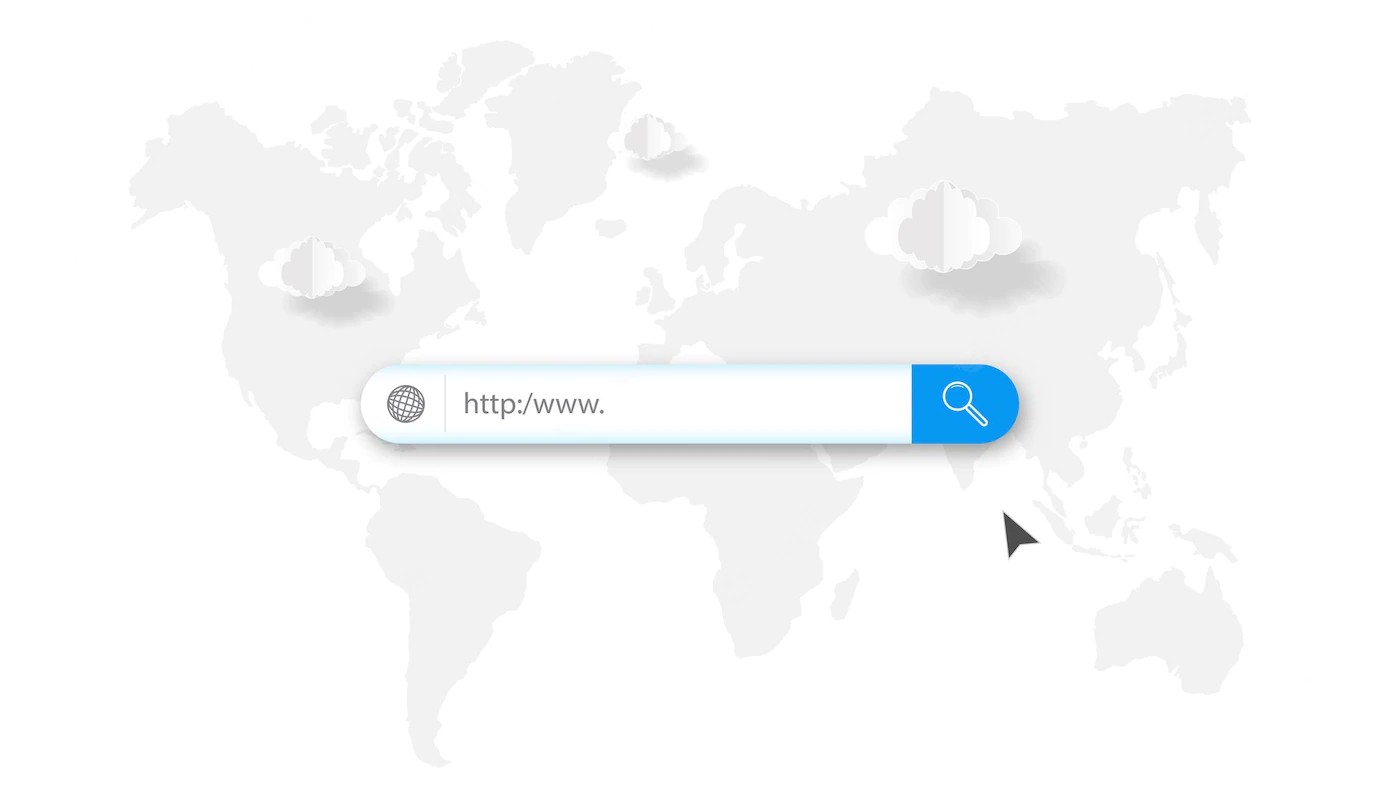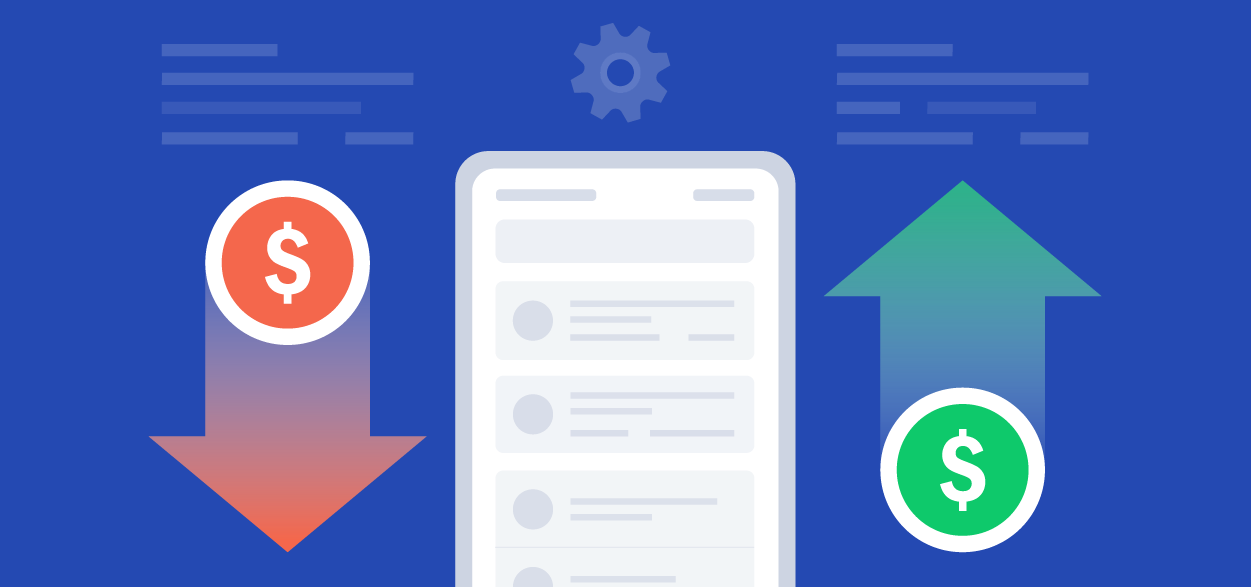It only takes about 0.05 seconds for users to form an opinion about your website – and decide whether or not they want to stay. Keeping your website up-to-date is an important way to show its quality, and the cost of maintaining a website pays off in the end. In this article, we will likewise give you a prescribed upkeep timeline to help you keep up with your eCommerce website maintenance pricing, and offer a couple of tips and deceives on the most proficient method to save cash (and time) on your website maintenance.
Table of Contents
What Happens When You Don’t Do The Maintenance Task for Your Website?
Some people make the mistake of ignoring website maintenance to cut costs. Don’t. While it may save you money at first, it shouldn’t come off as a surprise to you if you are consistently losing out on customers and conversions.
- Outdated technology: If you don’t upgrade components like your CMS, plugins, themes, etc., you’ll miss out on the newest features and functionality, including security updates. As a result, your site is vulnerable to all kinds of unpleasant things, such as hacking and code-breaking.
- Reduced content and design quality: Website maintenance includes maintaining your material up-to-date, developing new site content, and upgrading the design occasionally. A website that isn’t updated regularly becomes outdated and unappealing.
- Compromised security: If you don’t implement security measures like backups, you’ll be unable to recover your site if the worst happens.
- Slower Website Performance: Over time, websites can slow down if not maintained properly. Regular maintenance is akin to oiling the gears to ensure smooth and efficient performance.
- Decreased Search Engine Optimization (SEO): Search engines evaluate websites based on criteria like content quality, security, and loading speed. Neglecting these aspects can lead to a lower ranking in search results, making your site less visible to potential visitors.

Website maintenance pricing regularly goes spontaneously, yet is basic for ensuring that your site runs dependably and productively. On the off chance that you overlook site support to reduce expenses, you may not notice until past the point of no return that you have been losing significant traffic and deals. Far and away more terrible, you may need to wind up paying for exorbitant crisis fixes. Over the long haul, site support is in every case more affordable than site fix.
Avoidance is in every case better compared to fix. A broken site will not just cost more cash to fix, but can likewise harm your business’ branding and altruism.
How Much Does Website Maintenance Cost?
Not all websites require a similar sort and level of support. A small website will not need some expert-level designs and email showcasing as a genuine business website will. This is how much every website maintenance monthly costs and their fundamental needs:
Small Blog Website Maintenance Pricing
A little hobby webpage blog (less than 100 monthly guests) is typically modest to keep up. On average, a little blog will have an average website maintenance cost somewhere in the range of $5 and $25 each month, with most of that cash going towards paying facilitating expenses and area enlistment costs.

Since the website owner ordinarily does the entirety of the arrangement and support of the actual website, just as composing their substance and taking their photos, these locales cost nothing to make and keep up. Essential facilitating bundles will offer the entirety of the usefulness that a little blog needs at a low value, which likewise helps keep support costs down. To help cut expenses on your little blog, attempt to restrict yourself to free devices, layouts, and photography.
Medium Blog Website Maintenance Pricing
A medium (100-1000 month-to-month visitors) estimated blog that is not participating in a lot (or any) paid publicizing or showcasing endeavors will commonly cost about $20 – $60 each month in website maintenance fees. Medium-sized sites may spend somewhat more on stage or facilitating expenses to open extra functionalities, or on modules like enemies of spam devices.

The specialized support and arrangement are regularly done by the site proprietor, even though they may temporarily have to recruit a consultant on a per-project basis. To help cut expenses on these websites, attempt to utilize free layouts, center around content organizations and web-based media instead of paid ads, and utilize free devices wherever possible.
Focused Blog Website Maintenance Pricing
An enormous blog (more than 10000 month-to-month visitors) or a blog putting resources into developing its crowd will probably go through more cash each month in website maintenance, specifically from $50 to $300 per month.
The expenses of showcasing and advertising are probably going to be the biggest consumption, with the month-to-month costs relying altogether upon the financial plan of the site proprietor and the amount they are willing to spend. Content creation and photography costs are additionally liable to increase, as these destinations may pay for authorized photography or recruit specialists/workers for content creation.
Website maintenance pricing per month is probably going to increment too – since numerous devices offer estimating plans dependent on the quantity of month-to-month guests to a webpage or employments of the instrument, bigger website blogs will probably have to pay for the premium or paid variants of devices that more modest websites can get free of charge.
Small eCommerce Website Maintenance Pricing
A small, personal eCommerce website gaining up to $50000 each year will just cost about $30 – $35 each month. Your website maintenance fee should be purchased for the month-to-month facilitating cost, including space and SSL permit, installment assortment, and expert topics, you can run your online store for just $30 each month. If you need to buy a custom space for your site, you may pay somewhat more to enroll and restore that area every year.
Professional eCommerce Website Maintenance Pricing
An expert, medium-sized internet business website will cost from $80 to $150 each month, to begin with, even though you might need to decide to pay extra for a custom space, premium subject, or different administrations.
Enterprise eCommerce Website Maintenance Pricing
A huge scope business eCommerce website exchanging more than $500000 each year will have the average website maintenance cost per year somewhere in the range of $3600 and $6000, yet this can change generally depending on various elements. The biggest determinants of your yearly maintenance costs will be staff – the amount of work you have recruited others to do and the amount you are paying them.

Your promoting or showcasing spending plans will likewise fluctuate contingent upon your business’ spending plan, and bigger web-based business sites might need a spending plan for yearly SEO streamlining and upkeep. Regarding support costs, a critical part of your yearly cost will go towards facilitating, yet your facilitating expenses ought to incorporate many additional highlights at this level.
Huge sites will need to ensure that they have solid security modules set up, just as standard site reinforcements.
Essential Website Maintenance Costs
While evaluating your average monthly website maintenance pricing, you must consider these eight factors, which will have a huge impact on how much eCommerce website maintenance costs your business.
Domain Names
The most fundamental website maintenance fee you will encounter is your domain name cost. Your domain name is your website’s address on the web, and it is not a one-time buy. The way domain name billing is diverse. Most domain name registrars bill on a yearly premise, others pay monthly or it can contribute to your website maintenance pricing per hour. And you will need to keep steady over that yearly expense so you can keep responsibility for the space name.

The average cost for registering a domain name typically ranges from around $1 to $100 per year, and for renewals, it can be between $10 and $129 annually. This fee is non-negotiable for website owners, as every site needs a domain name. Interestingly, some hosting providers bundle free domain registration with their hosting plans.
The price of a domain name is largely influenced by its extension. The three most popular types of extensions or top-level domains (TLDs) are:
- Generic TLDs (gTLDs) like .com, .net, and .org, are available for use by any website. Their cost varies based on popularity.
- Country Code TLDs (ccTLDs) are country-specific, such as .us for the United States or .vn for Vietnam.
- Sponsored TLDs (sTLDs) are meant for specific types of owners or purposes, like .edu for educational institutions.
Another important aspect affecting the cost is the choice of registrar. Opting for a reliable domain registrar is essential to avoid potential scams and hidden fees. A good starting point is to refer to the list of accredited registrars provided by ICANN.
Typically, purchasing a domain name means registering it for at least a year. To avoid losing the domain, the owner must renew it before it expires.
It’s also wise to consider including domain privacy protection in your maintenance plan. This service helps to shield the personal information of the domain name owner from the public WHOIS database, enhancing security. The cost for domain privacy protection usually ranges from $2 to $20 per year, depending on the registrar.
SSL Certificate
SSL certificates encrypt data going through your website and protect guests’ data. Regardless of what kind of site you are running, security is quite possibly the most beneficial cost that you will bring about. If guests do not consider you to be as reliable, it will affect commitment.

The cost of an SSL certificate can range from free to around $60 per year, making it a necessary yet affordable investment for most website owners. The importance of SSL cannot be overstated, it not only enhances your website’s security but also contributes to stronger data privacy and improved search engine performance. Websites handling sensitive user data, such as passwords or credit card details, are especially in need of SSL certificates.
The price of an SSL certificate can vary depending on its scope. For a single-domain SSL, prices typically range between $7 and $860 per year. If you require a wildcard SSL certificate, which covers multiple subdomains, the cost can range from $50 to $1,000 annually. A cost-effective strategy to acquire an SSL certificate is to choose a web hosting plan that includes it for free.
To verify if your website has an active SSL certificate, you can simply check for a padlock icon in the address bar of your browser. Clicking on this padlock will display the certificate’s validity, ensuring that your site’s security measures are up to date.
Web Hosting Providers
If you are utilizing a substance-the-board framework (CMS) like WordPress, you will need to discover a web hosting provider. Web hosting providers power your webpage and choose everything from how rapidly your pages burden to the number of records you can store.

Hosting costs change as indicated by hosting providers and hosting type. It can vary widely, generally ranging from around $2 to $80 per month. This variation is based on factors like the hosting provider, the type of hosting, and the length of your subscription.
The most widely recognized kinds of hosting are shared, VPS, cloud, and devoted hosting. Shared hosting is the least expensive sort and, in any case, obliges the requirements of generally small to medium-sized websites.
Shared Hosting
Ideal for small to medium-sized websites, such as simple portfolios and blogs, shared hosting is the most cost-effective option. In shared hosting, you share server resources with other websites, which keeps the costs down. It’s an excellent choice for those starting out or with limited hosting needs.
VPS Hosting
For medium-sized websites, VPS hosting offers a balanced solution. It provides dedicated resources on a shared server and greater control over server settings. This hosting type is well-suited for technically savvy users who require more than what shared hosting offers but are not ready to move to a dedicated server.
Cloud Hosting
Cloud hosting operates by using a cluster of servers, enhancing website uptime and reliability. It’s particularly beneficial for websites with heavy traffic or those with high growth potential. The distributed nature of cloud hosting ensures better handling of traffic surges, making it a robust choice for growing websites. Moreover, the technical maintenance is typically managed by the hosting provider, easing the burden on website owners.
Dedicated Hosting
This type of hosting is tailored for established businesses requiring high performance. Dedicated hosting provides an entire server dedicated to a single website, offering complete control over server files and settings. While offering superior performance and customization, dedicated hosting is the most expensive option, with costs ranging from $80 to $300 per month.
Email Hosting
Email hosting signifies having a custom email worker for your website, which can oblige email companyname@domain.com and loan your website more professional. Like SSL security, fundamental email hosting is accessible for nothing from many hosting providers, yet numerous site proprietors decide to pay more cash for additional highlights and capacities.

Email hosting is a fundamental cost for a business website because having email addresses hosted in your space supports your website’s polished skills. Then again, in case you are running an individual site, email hosting is an incredible expansion if you have some additional financial plan to spend.
The average pricing for email hosting ranges from $1 to $6 per user per month. While basic email hosting can often be found for free with many hosting providers, many website owners opt to pay for additional features and capabilities that enhance functionality and user experience.
For those seeking premium email services, Google Workspace is a popular choice, offering its services at around $6 per month per mailbox. This service is known for its reliability and range of features, making it a preferred option for many businesses.
Alternatively, you can find hosting providers that include free email services with their web hosting plans. This can be a cost-effective solution, especially for small businesses or individual website owners looking to streamline their expenses.
The total cost of your email hosting service will also depend on the subscription length of the plan you choose. Typically, longer subscription terms can offer more cost-effective rates.
Additionally, the number of mailboxes you require will influence the overall cost. More mailboxes mean higher costs, so it’s important to assess how many dedicated email addresses your website needs to operate effectively and professionally.
Tech Support
Both web designers and web hosting providers have in-house client care groups to help you work out specialized challenges, complimentary. In any case, if you need more custom-made help, you can select to re-appropriate and pay for a website support administration. Site upkeep administrations come as layered bundles, so you can pick an arrangement (and, more critically, a cost) given your website’s needs.

Tech support could cost you nothing, or it very well may be the most costly website support cost on your rundown. Everything relies upon what you are hoping to escape these administrations. We suggest beginning with the in-house uphold remembered for the cost of web designers and hosting providers, and choosing what extra help (assuming any) you will need from that point.
The average cost for tech support can range from as little as $2 to $300 per month, depending on the complexity and level of personalized support you need. Website maintenance services often come in tiered packages, allowing you to choose a plan that fits both your website’s requirements and your budget.
Different forms of tech support include:
- Live Chat: Offers quick and convenient assistance through chat messages, ideal for immediate, less complex issues.
- Email Ticketing System: Utilizes email and an online tracking system for handling technical support requests. This method is beneficial for keeping a record of interactions and is useful for more detailed or complex queries.
- Phone Service: Some users prefer speaking directly to a customer service representative for real-time, verbal communication, especially for urgent or intricate problems.
- Knowledge Database: Many hosting providers and web services offer tutorials or guides for those who prefer to solve issues independently.
For personal or small business websites, the standard support channels provided by most hosting providers, such as live chat and email support, are typically adequate.
However, larger or more complex websites, like eCommerce platforms, might require dedicated premium support. This level of support is geared towards providing immediate, personalized assistance to address more intricate issues or to maintain higher uptime and performance standards.
Search Engine Optimization (SEO)
SEO covers the entirety of the easily overlooked details you can do to support your website’s rankings in Google list items. Anything that makes your website simpler for internet searcher crawlers to discover will add to great SEO, and the most amazing aspect is, that you can make huge enhancements to SEO without anyone else, without spending a thing.

The cost of SEO can vary significantly, ranging from $100 to $800 per month, depending on whether you choose to do it yourself or hire professionals. Here are some essential advances that you can take:
- Writing Engaging Page Titles and Descriptions: The title and description of your pages are what appear in Google’s search results. Crafting short, informative titles and descriptions can significantly improve the likelihood of people clicking through to your site.
- Incorporating Relevant Keywords: Keywords are the terms that you want your page to rank for in search results. Strategically including these keywords on your pages can improve your site’s relevance in search results for those terms.
- Tagging Images with Alt Text: Providing alt text for images on your website not only aids in accessibility but also gives search engine crawlers additional context about your page’s content. This text appears in place of an image if it fails to load and helps improve your website’s SEO.
If you would like to have a specialist dealing with your web page’s SEO, you can counsel an SEO organization to examine your website and make a customized methodology. We would suggest this for bigger websites since SEO offices can make a great deal of accommodating specialized enhancements, however, they usually come at a high price.
Content Updates
Content updates are a vital aspect of website maintenance, directly impacting audience engagement and retention. High-quality content, whether it’s blog posts, About Us pages, profiles, or multimedia elements, can significantly enhance your website’s appeal and encourage visitors to stay longer and interact more.

If you have a flair for writing and enjoy the creative process, managing your content can be both cost-effective and rewarding. Creating your own content primarily involves your time and creativity. However, it’s crucial to maintain a consistent posting schedule to ensure your website remains fresh and engaging. An outdated blog or stagnant content pages can deter visitors and negatively impact your site’s reputation.
On the other hand, if you prefer to outsource this task, the costs can vary widely. Freelancers and creative agencies offer a range of services at different price points. If you’re looking to have new blog posts written regularly, for instance, several times a week, you might expect to pay anywhere from 10 cents to $1 per word, depending on the writer’s experience and the complexity of the subject matter.
For one-time needs, such as creating a landing page, the costs can range from $500 to $1,000 for the full page, reflecting the specialized skills and effort required to craft compelling, conversion-optimized content.
How to Reduce Website Maintenance Costs?
While the underlying arrangement cost of your website is a one-time concern, it is the progressing maintenance costs that will accumulate over the long run. To reduce your website maintenance pricing, start by distinguishing what recurring costs you are paying on your site (both yearly and monthly). Whenever you have a rundown of the entirety of your common website-related expenses, go down the list and ask yourself whether they are 100% essential.

For bigger websites, higher maintenance costs are unavoidable, however, numerous more modest websites and eCommerce websites can get by fine with free or implicit instruments. In case you are simply starting to construct your website, utilize free or minimal effort alternatives at every possible opportunity – it is typically a lot snappier and simpler to move up to more costly and feature-rich tools later on than it is to minimize in case you are overpaying.
On the other hand, faculty is generally the greatest cost. Return to any project worker arrangements you have set up routinely to ensure you are getting the best nature of support and website admin administrations at a sensible cost. While we prefer not to see individuals lose positions to mechanization, some of the time the more financially mindful choice is to supplant an individual with an apparatus or module – simply ensure that the substitution is a substantial one.
It can likewise be valuable to make your current group more productive – give cutting a shot at any superfluous revealing, or restricting dynamic support to pages driving snaps and changes. Focusing on pages by change rate will give you a capability of which pages on your site are performing admirably – just as encouraging you to find and fix pages that are not.
If you are looking for a trustworthy partner to outsource the web maintenance task of your websites, Magenest is delighted to work with you, regardless of project type.
Final Thought
Site upkeep costs change contingent upon the size and purpose of your website – however, even the smallest websites ought to hope to go through about $100/year. Medium-sized websites will wind up costing between $400 and $500/year, while bigger business and web-based business destinations can undoubtedly enter the $1,000+ yearly reach.
Remember that your costs will change depending on what sort of webpage you are running. For instance, an eCommerce store taking payments on location should spend more on SSL security than an individual blog will. Furthermore, if you choose to utilize a web builder, numerous fundamental costs will come to be remembered for your arrangement.











